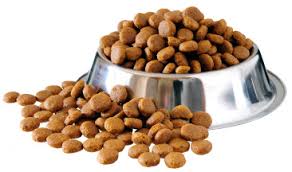Should You Worry About Copper in Your Dog’s Food? — Updated!
UPDATE: We are working to address this health risk, and need your help! Can you fill out a 90 second survey, so our working group can quantify the number of dogs affected and identify the number of concerned owners? You can answer it right here, or click to be taken to a new tab for the survey.
In a word, yes. Especially if you feed commercial products touting adherence to AAFCO standards.
“…what if we told you those complete-and-balanced diets — the quality food you’ve carefully chosen for your dog — may be slowly killing them? It’s true, says Dr. Sharon Center, the James Law Professor of Internal Medicine at Cornell University’s College of Veterinary Medicine.”
While you digest that quote from the Cornell University College of Veterinary Medicine News, here’s some basic copper info. Copper is a mineral that is an important nutrient, although required in trace amounts. It is involved in red blood cell formation, tissue formation and maintenance, iron absorption, and other body functions. Foods high in copper content include shellfish, organ meats, and some nuts and seeds.
Copper deficiency is rarely a problem in dogs eating commercial products. Many of these products will contain organ meats in some form, as well as supplemental copper from a vitamin mineral premix. Unless using a diet consisting of low copper ingredients (rice, dairy, eggs), or one high in competing minerals such as zinc, it is difficult to induce a copper deficiency.
Copper excess is a whole other story, especially when it comes to AAFCO standard foods. The problem is fairly straightforward — at this time, AAFCO does not specify a maximum amount of copper in their standard for dog foods. So, depending on what ingredients are used in a product, and what vitamin mineral premix may be included, the copper level may exceed the minimum requirement,sometimes by several times over.
Excessive copper intake, potentially combined with genetic predisposition, is leading to an increase in liver disease is dogs. Classically a problem in Bedlington Terriers and Dobermans, copper storage disease is now common in many breeds, including the Labrador, Cocker Spaniel, West Highland White Terrier, Keeshond, and more, including mixed breeds. Diagnosing and treating copper storage disease is invasive, requiring liver biopsies and other diagnostic testing, medical treatment often for life, and strict dietary management. It is an expensive proposition to correctly manage. A quick look at the stories in the Canine Liver Disease Support Group shows how widespread and devastating this problem is.
The real kicker is that in many cases, this disease is preventable or its impact can be minimized by feeding of appropriate amounts of copper. Yet AAFCO and FDA have refused to take action, despite the recommendations from leading veterinarians, such as Dr. Sharon Center and her colleagues at Cornell’s College of Veterinary Medicine. The American College of Veterinary Internal Medicine, the credentialing body for specialists in veterinary internal medicine, oncology, cardiology, and nutrition is in agreement, and published their consensus statement on the problem in the Journal of Veterinary Internal Medicine.
Yet the advice of these leaders in veterinary education and research appears to be falling on deaf ears. Dr. Center has spoken at an AAFCO listening session (begins at 1:12:12 on the video) on this topic, as well as to FDA representatives. She continues to be the foremost authority on liver function in dogs — her accomplishments and impact on veterinary research and education are renowned, world wide. So, why won’t AAFCO and FDA listen to her, and the distinguished list of colleagues that are partnering with her on this issue? (If you are listening, FDA and AAFCO, here’s a tip — I don’t think she and her colleagues are going to give up!)
Could it be that the pet food industry does not want to do the ingredient and finished product testing needed to more precisely control the copper level in products? Perhaps they want to keep using “one size fits all” vitamin mineral premixes, which are cheaper than using a custom formulated one that fits with each product’s formulation? Maybe they simply aren’t worried about providing copper levels 3, 4, or even more times the minimum requirement, as the number of dogs that will be affected is not going to impact their product sales?
Whatever the reason, the absurdity of not placing a maximum on the copper amount in foods must be corrected. If AAFCO and FDA will not take action, perhaps the brands should step up. If you feed a commercial product, call or email your company and ask for the copper content of what you feed. Ask them to show you the comparison to the recommended minimum level. And please share what you learn on my Facebook page.

